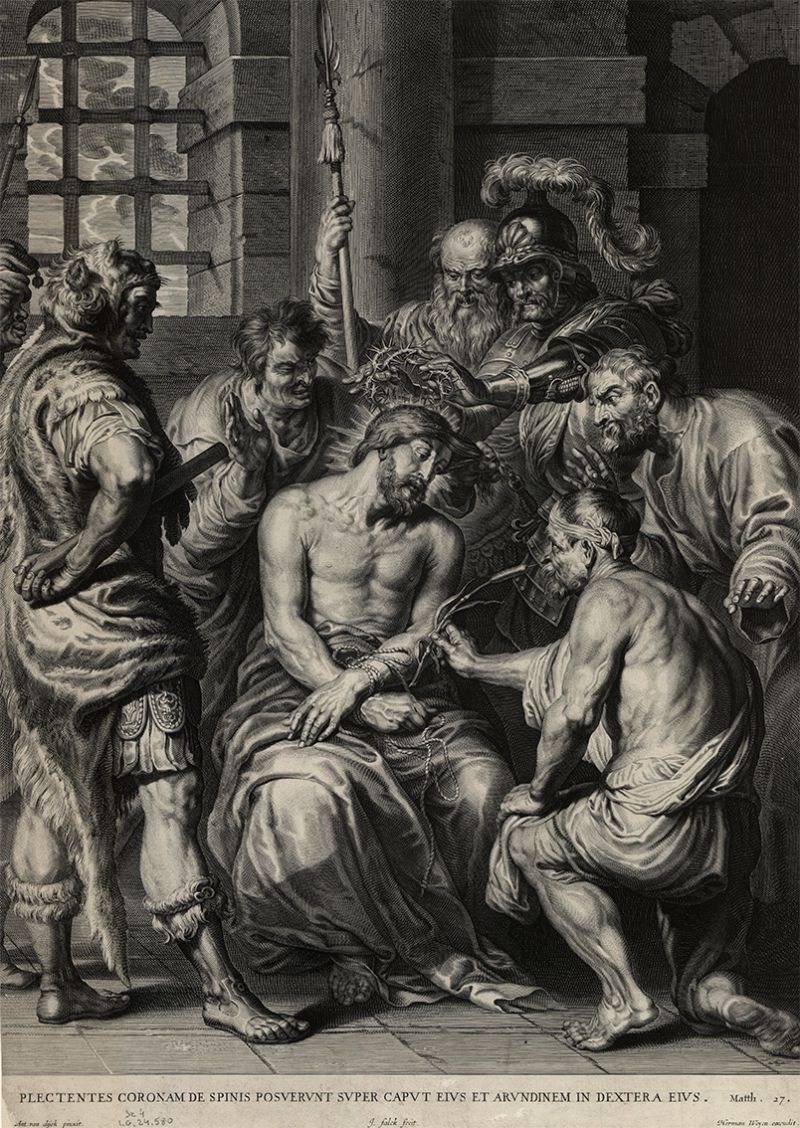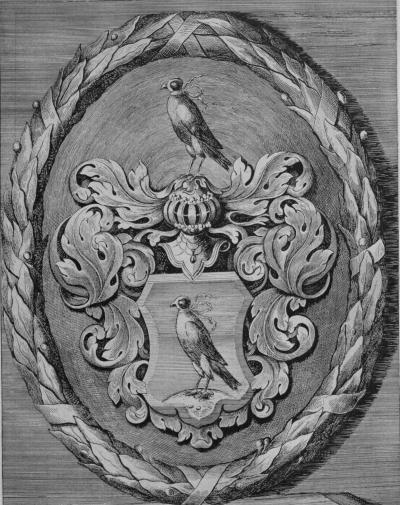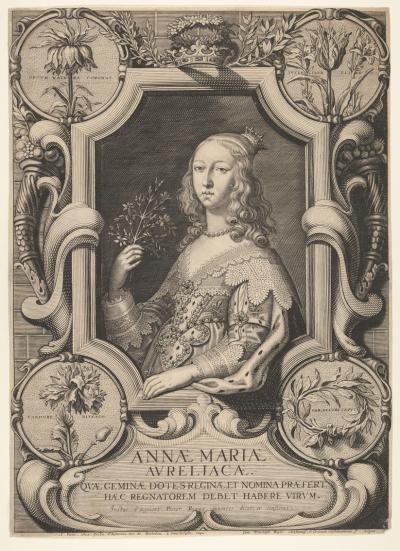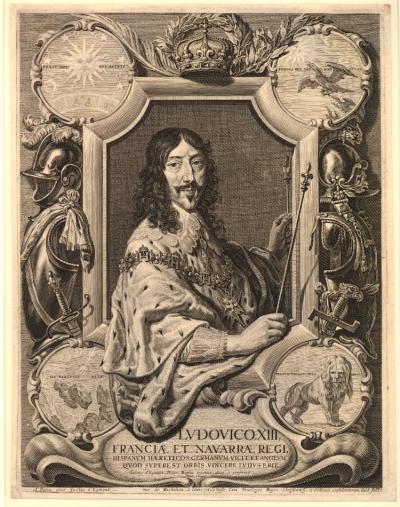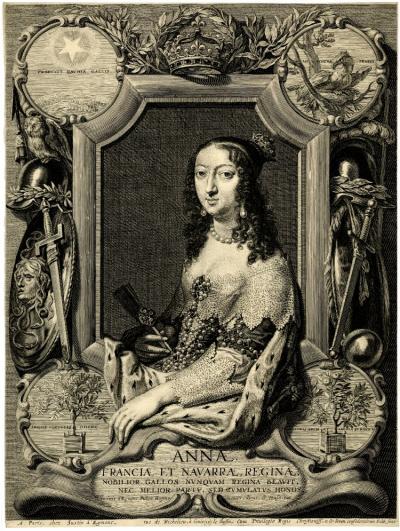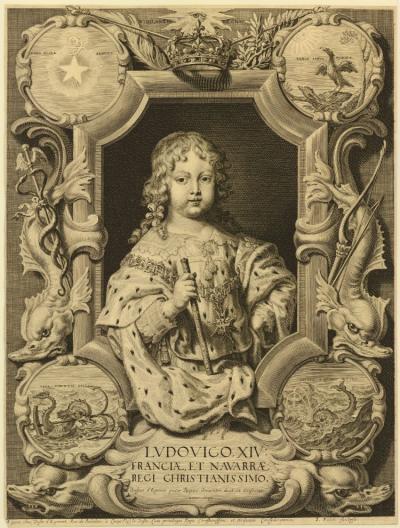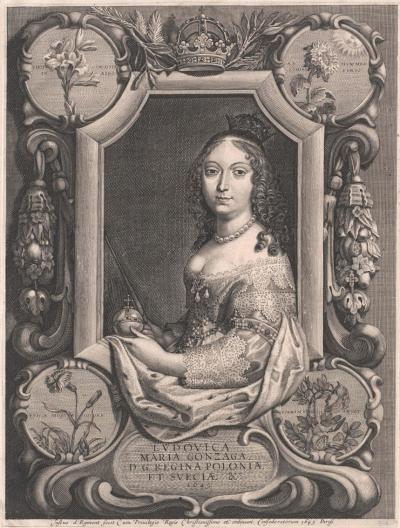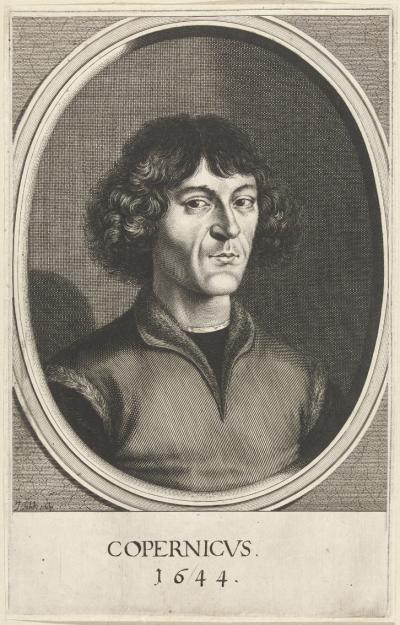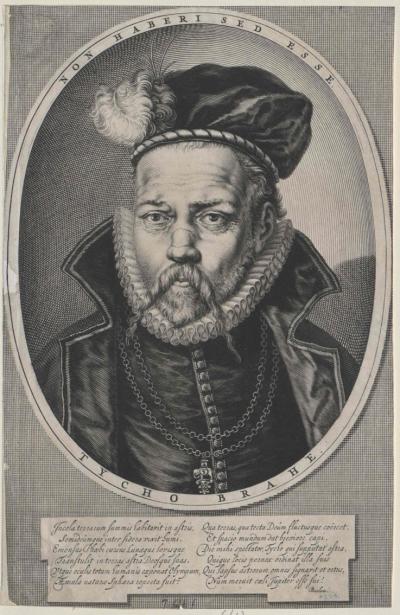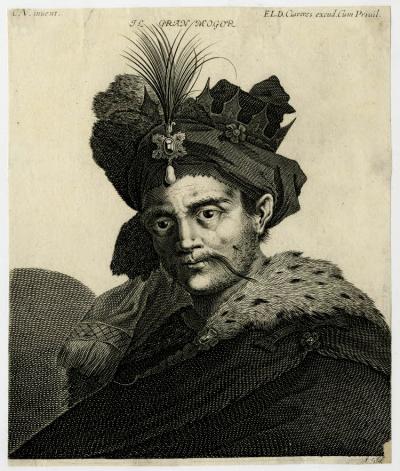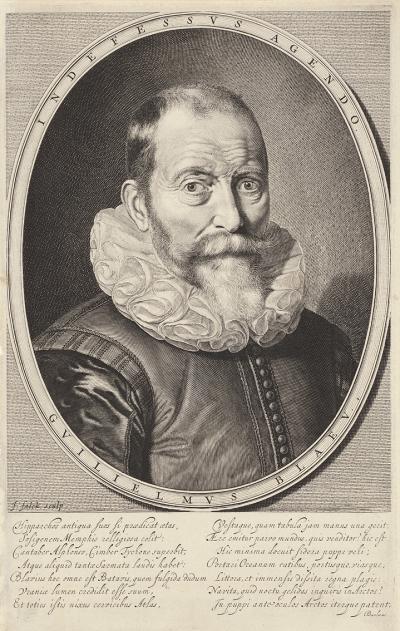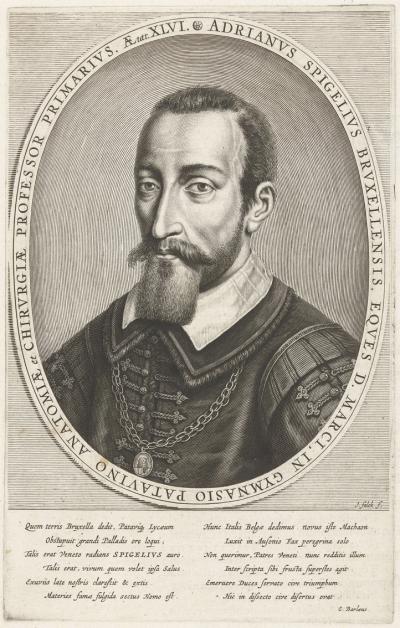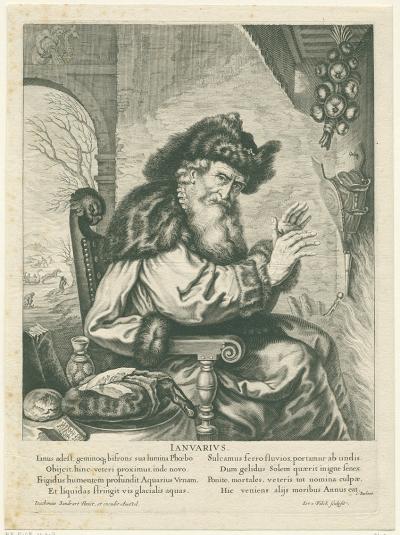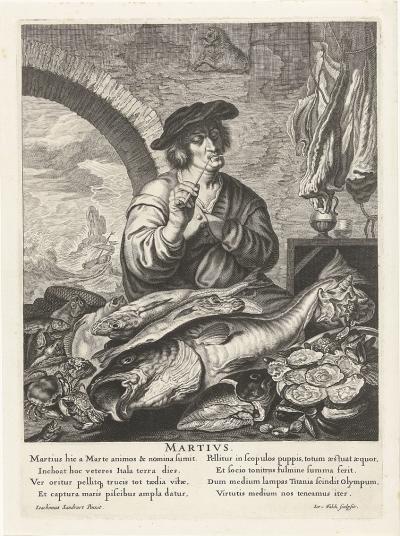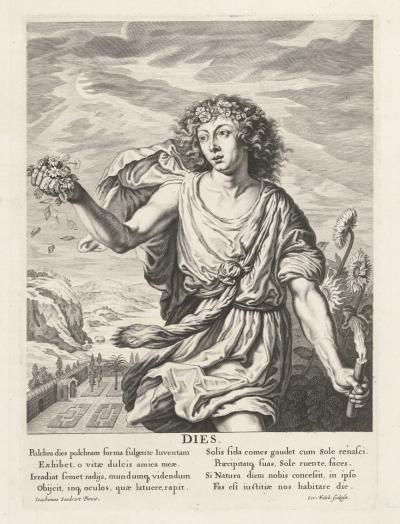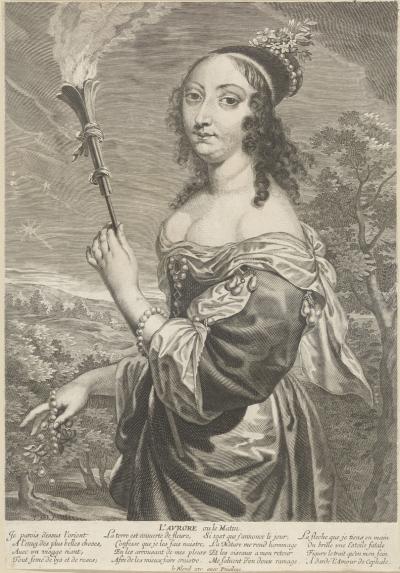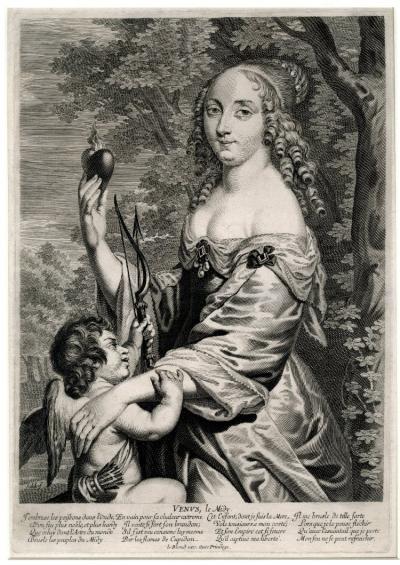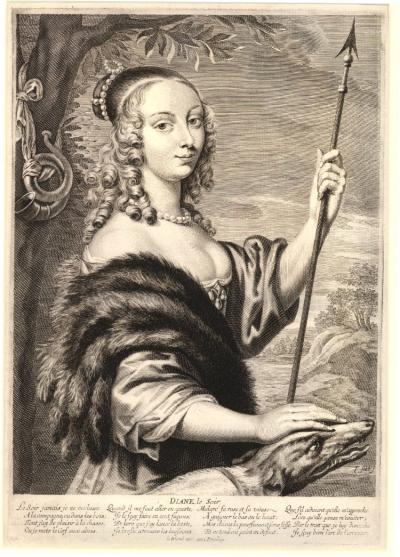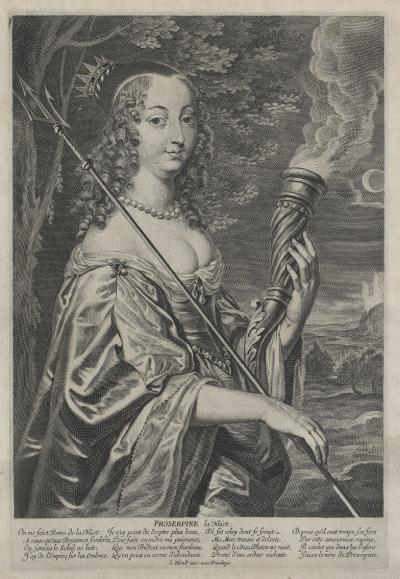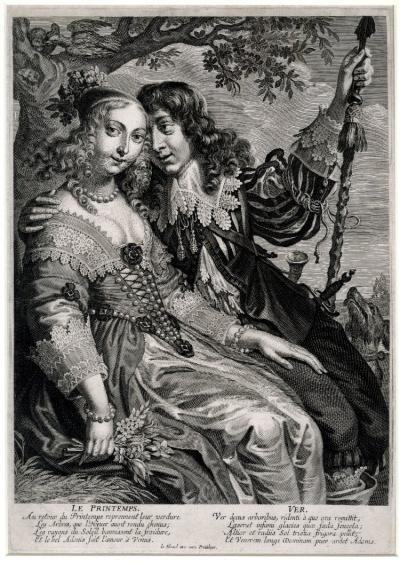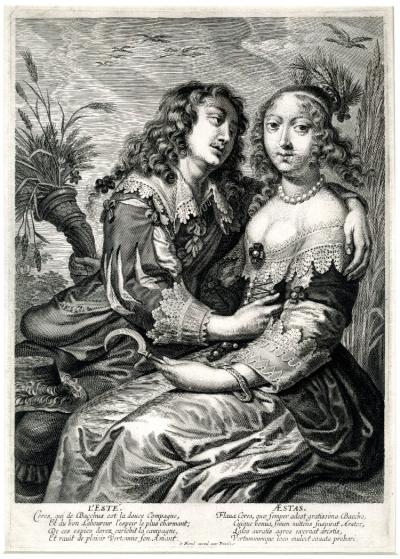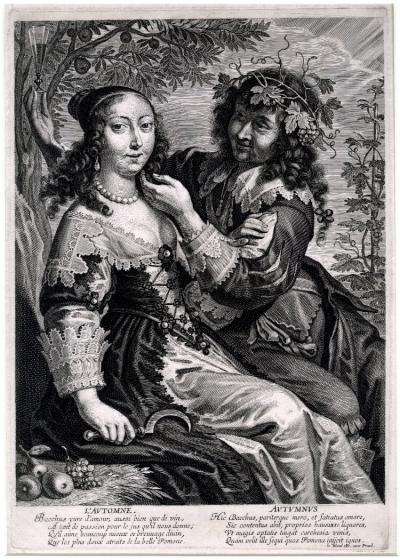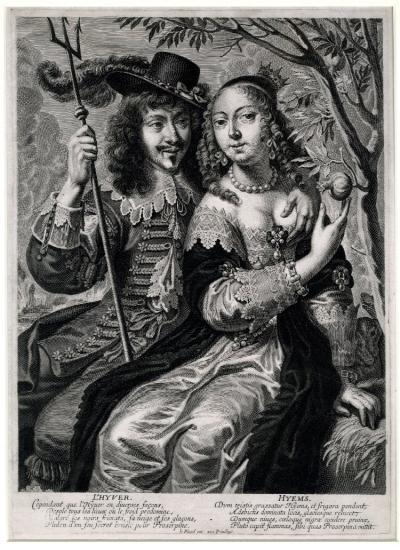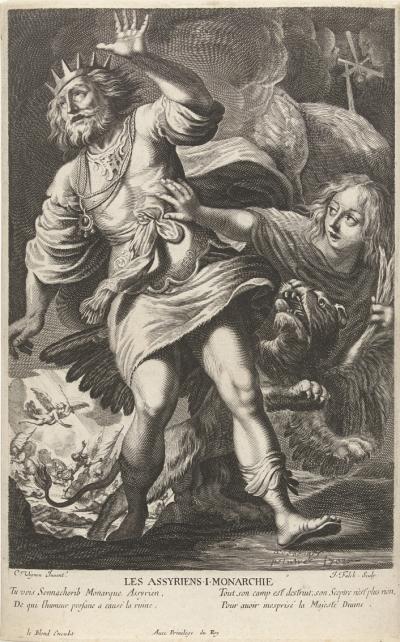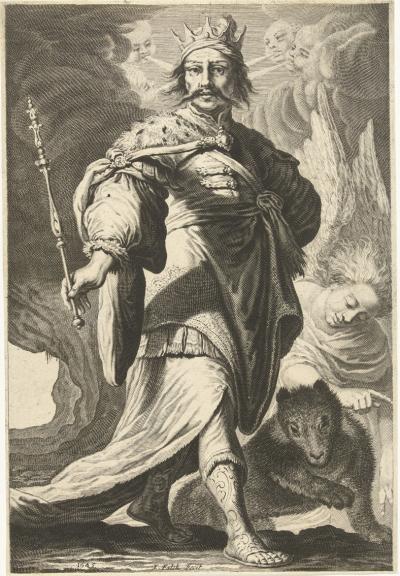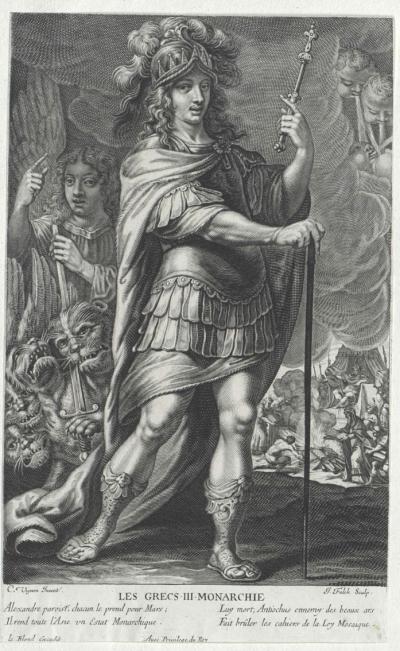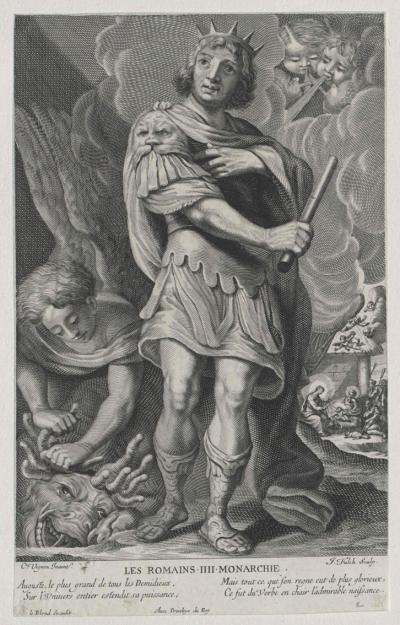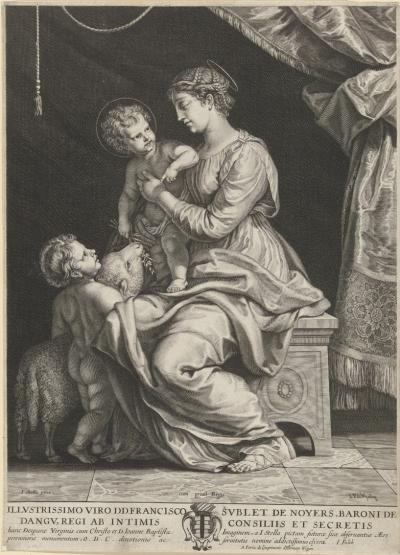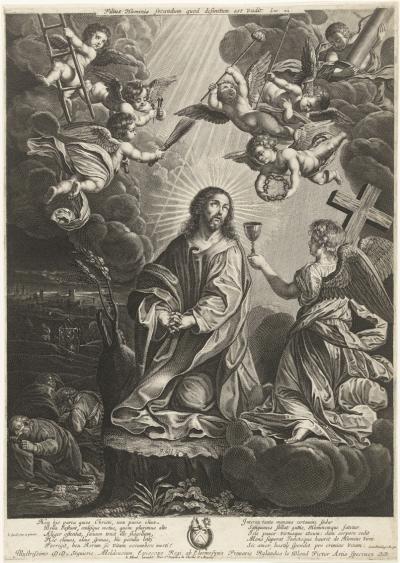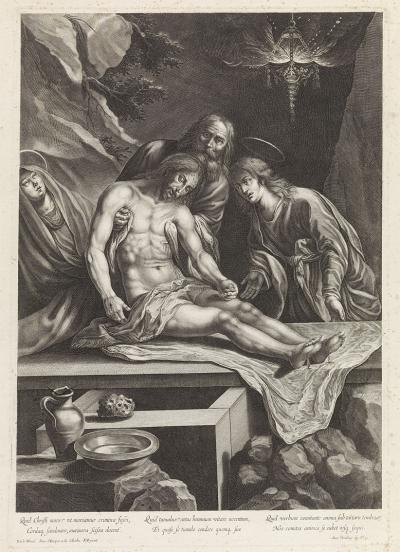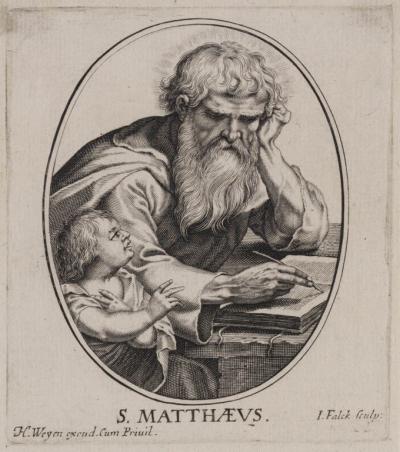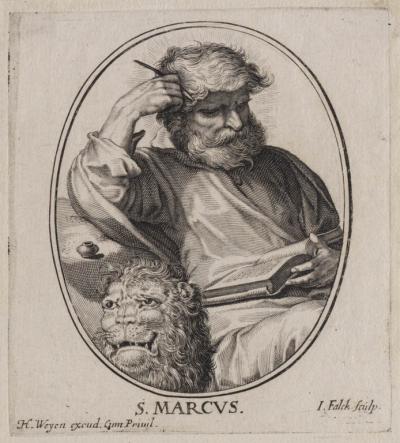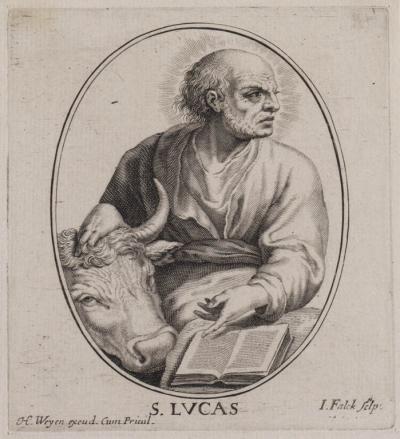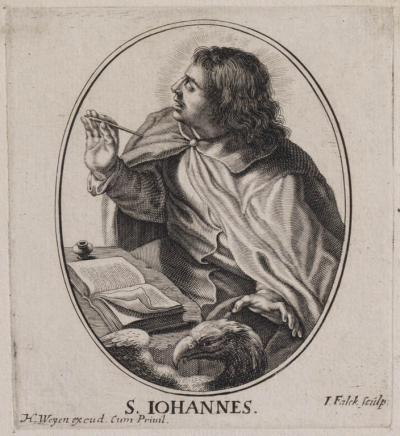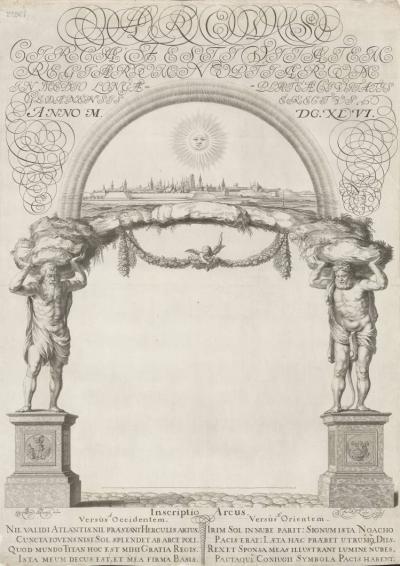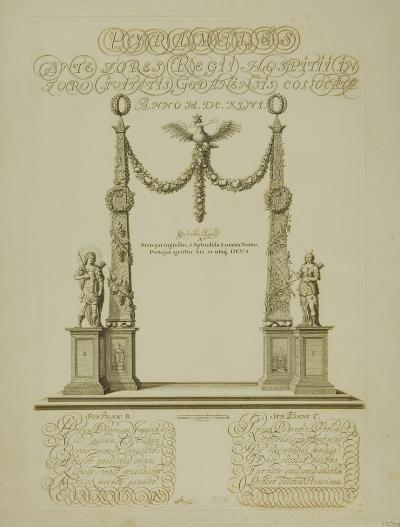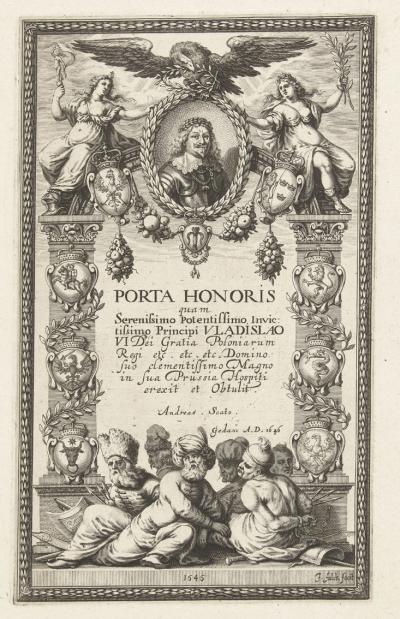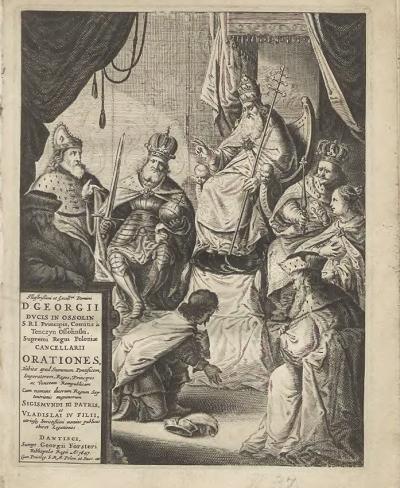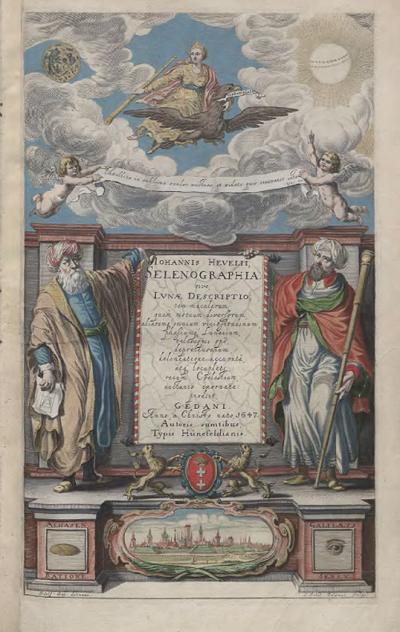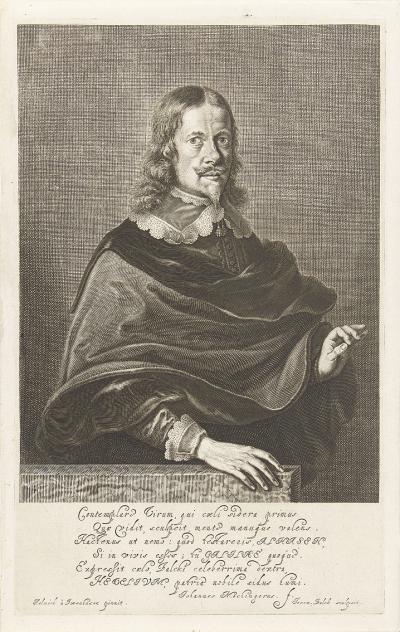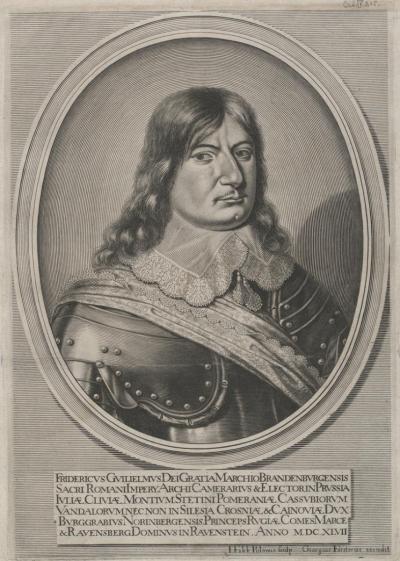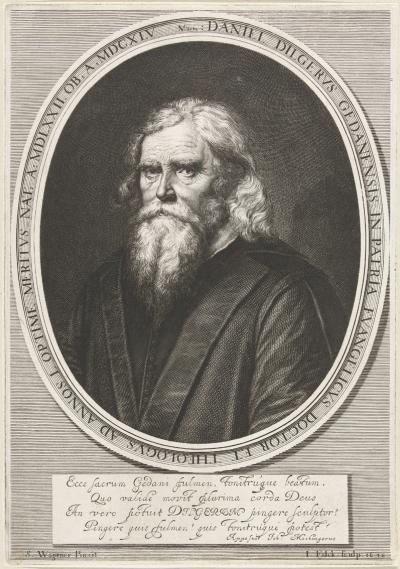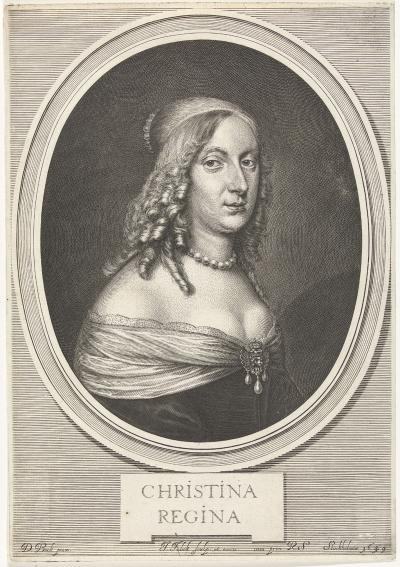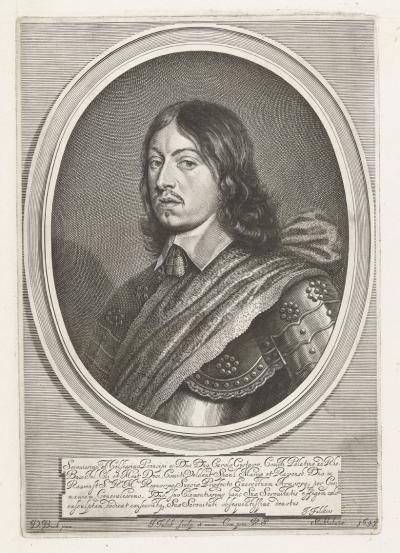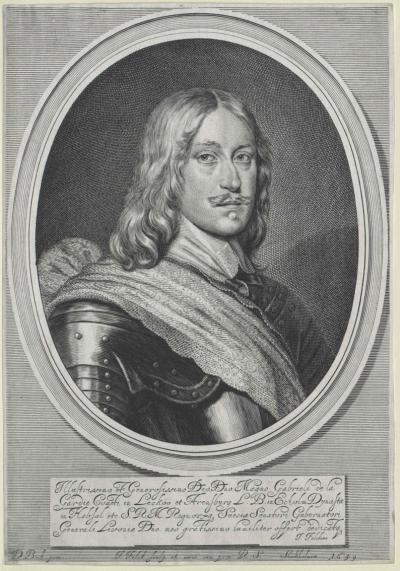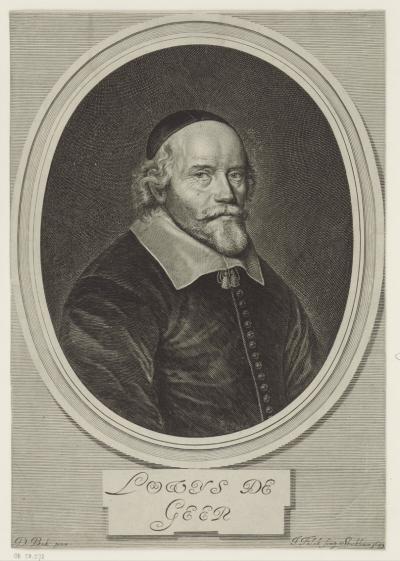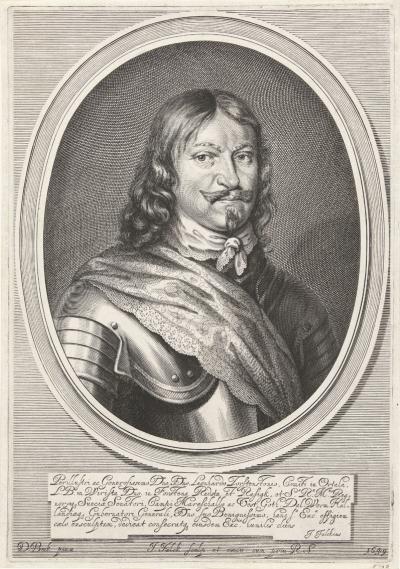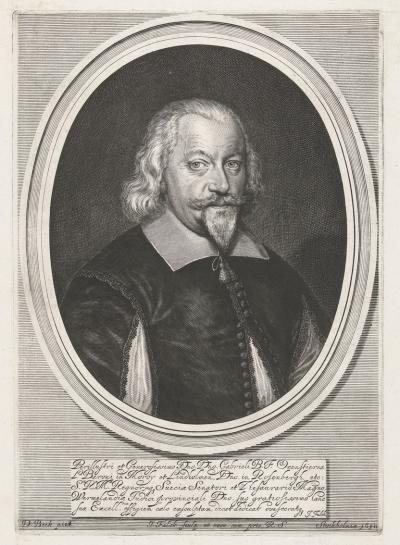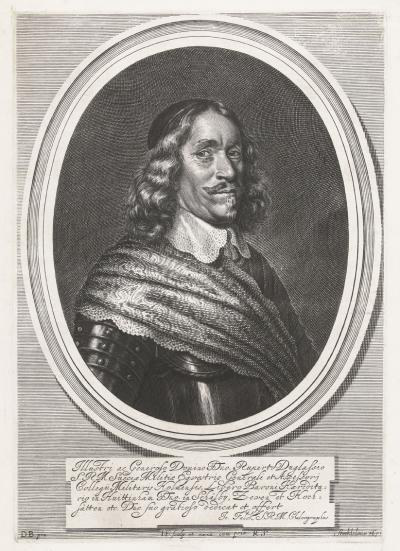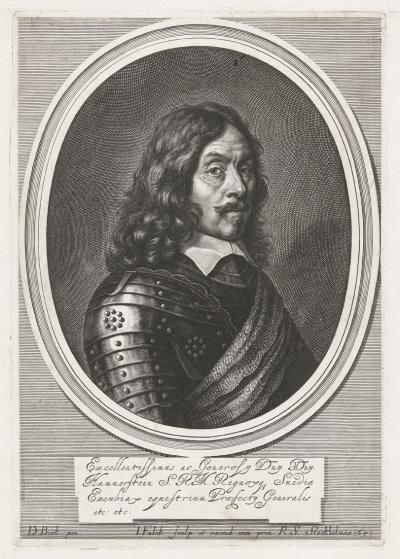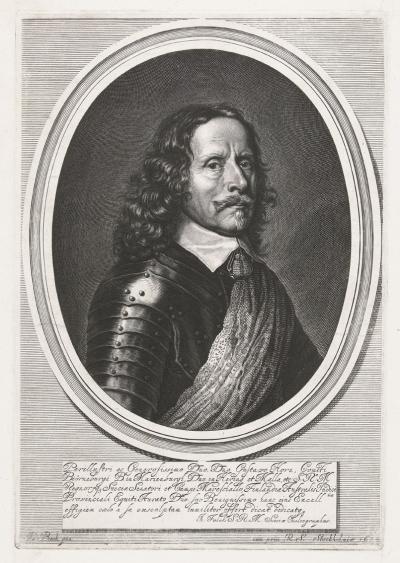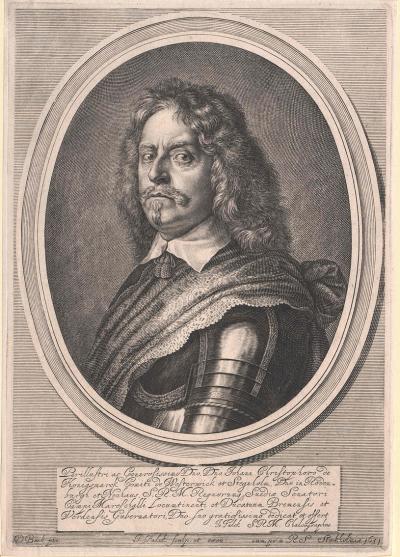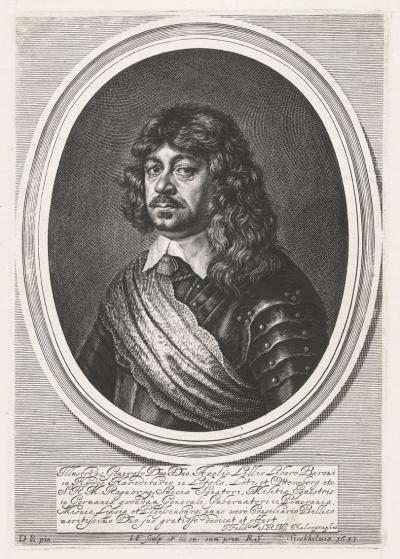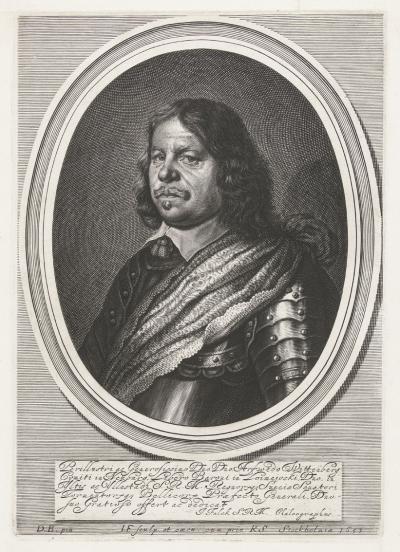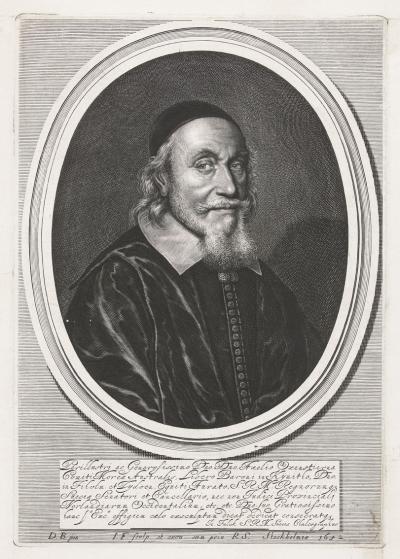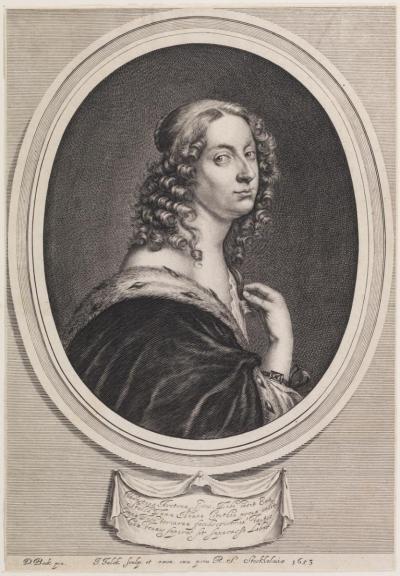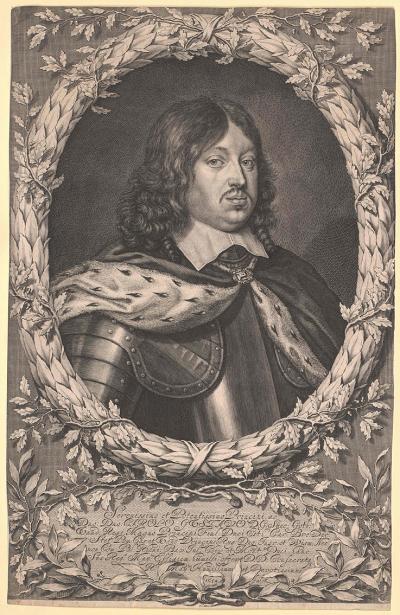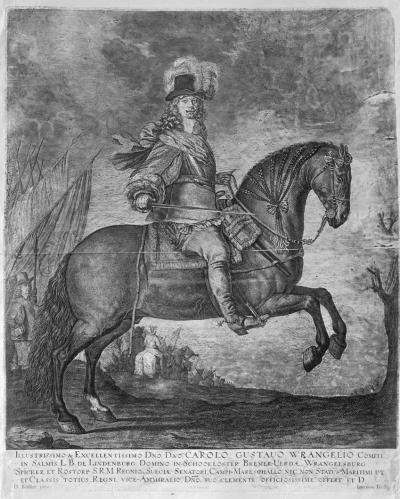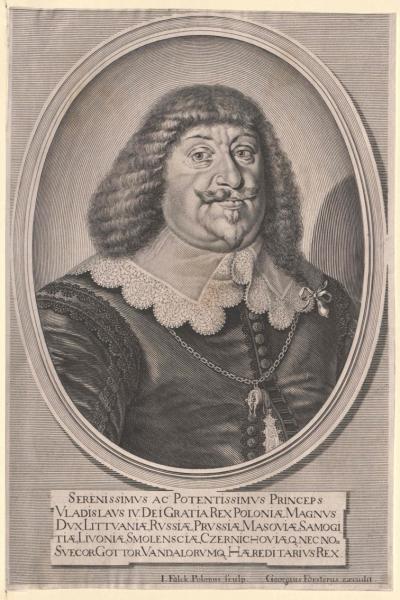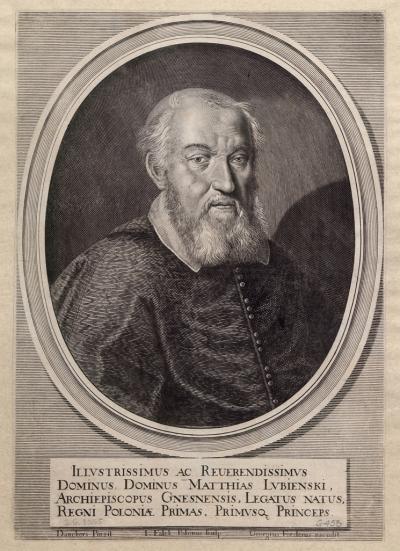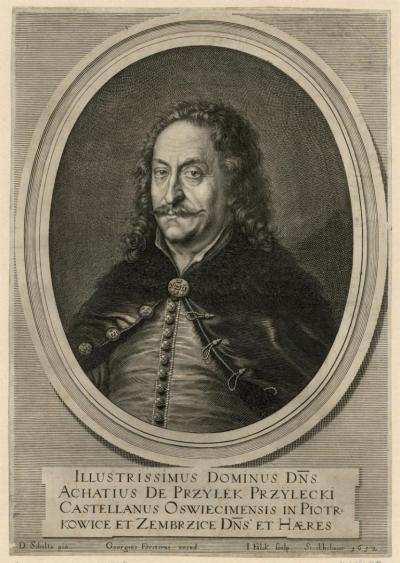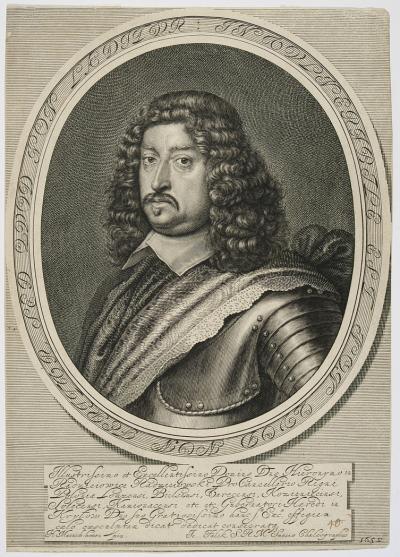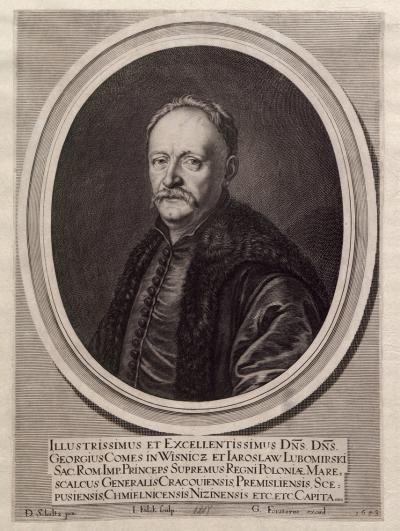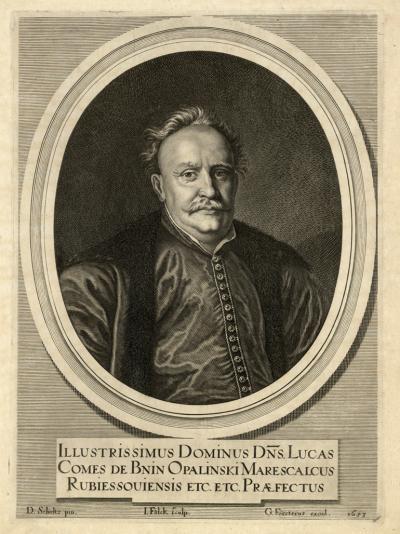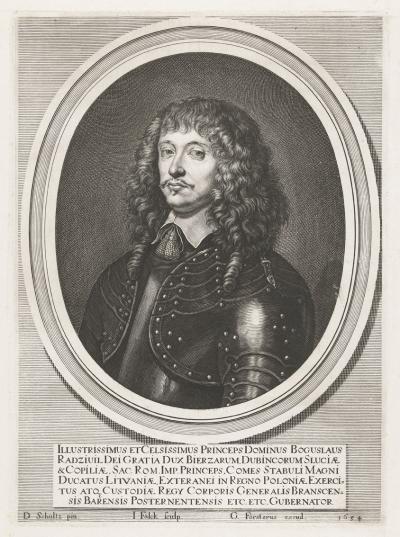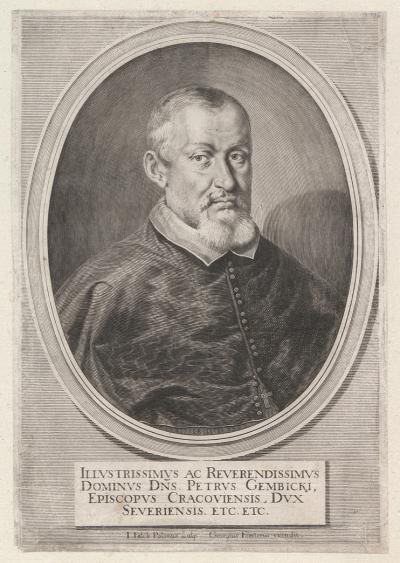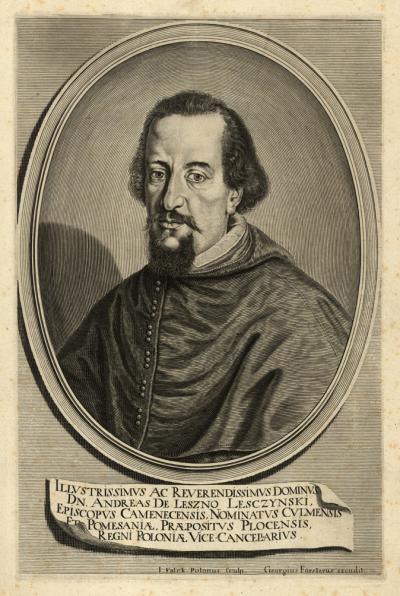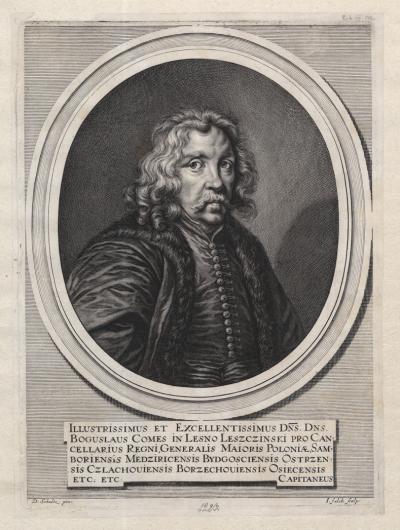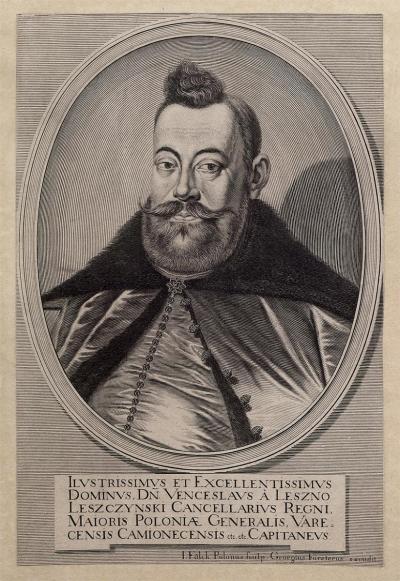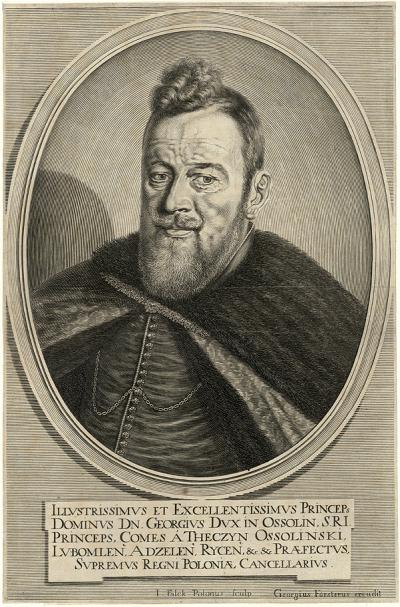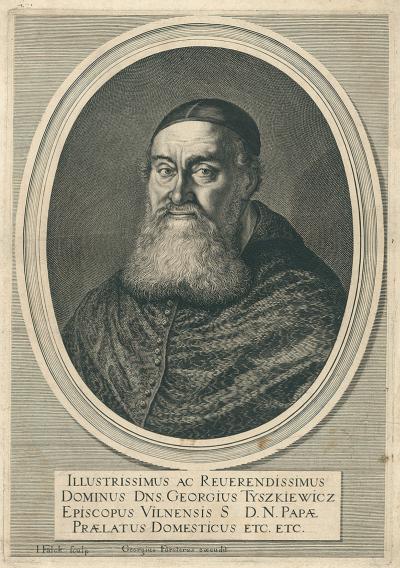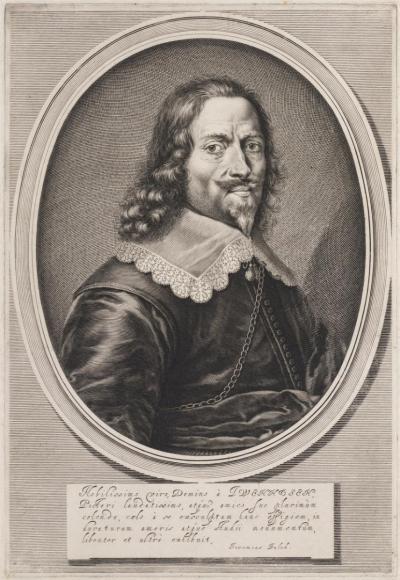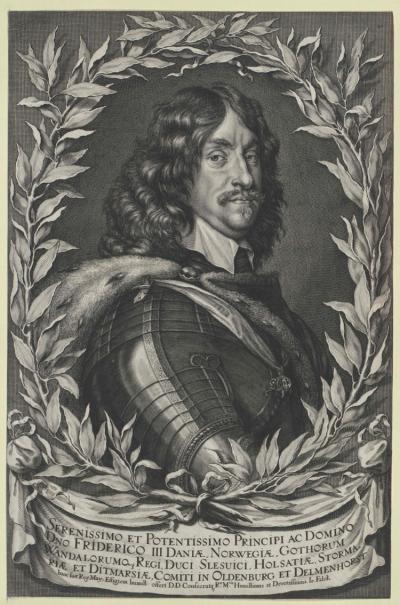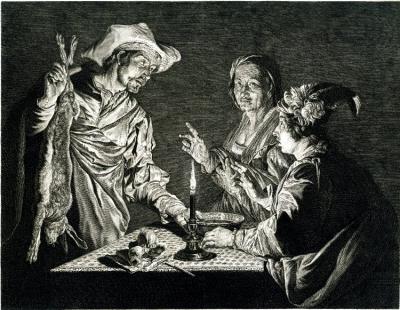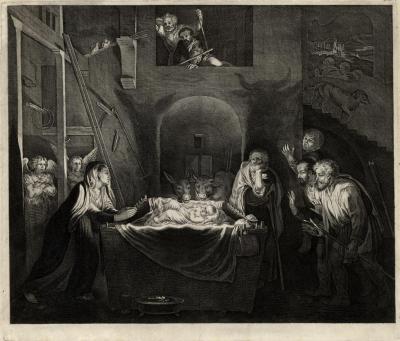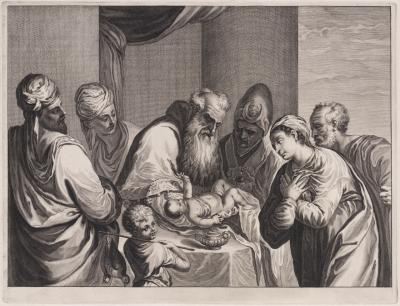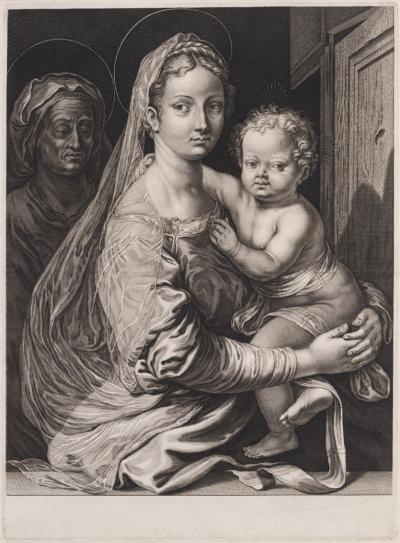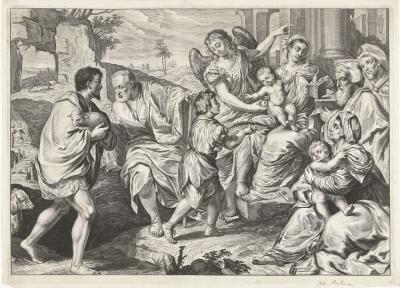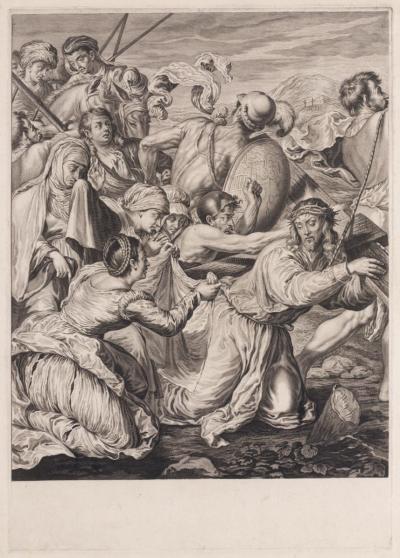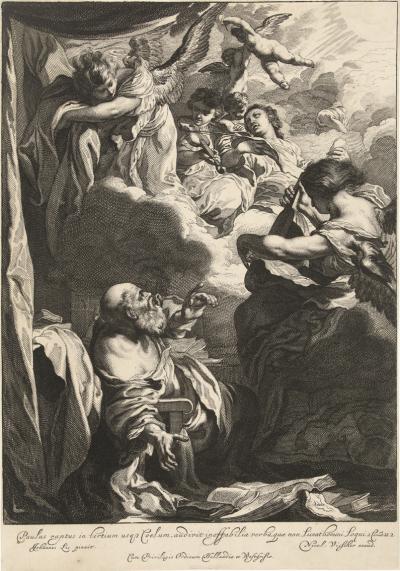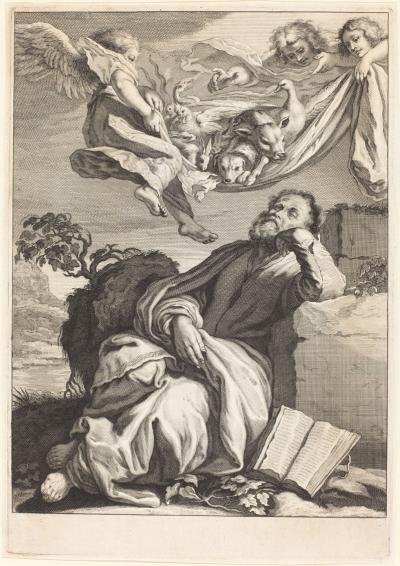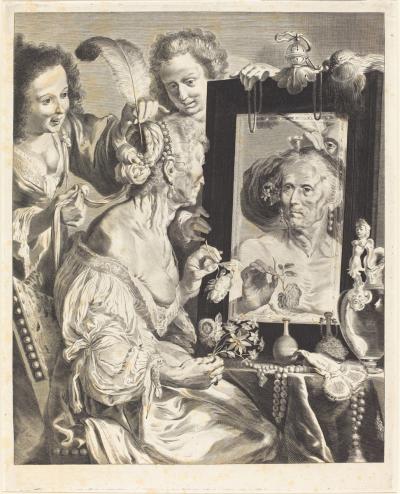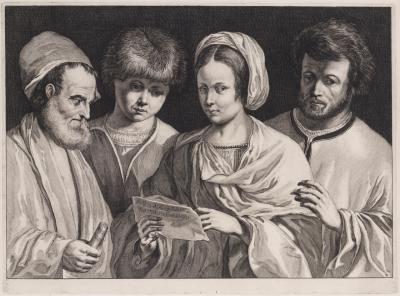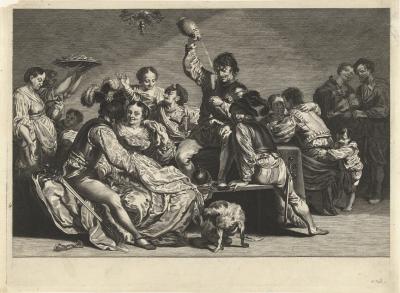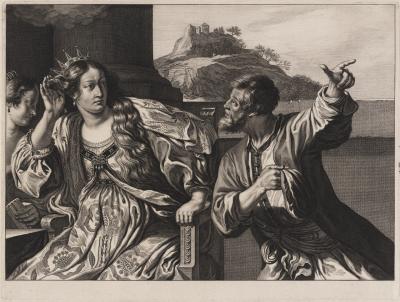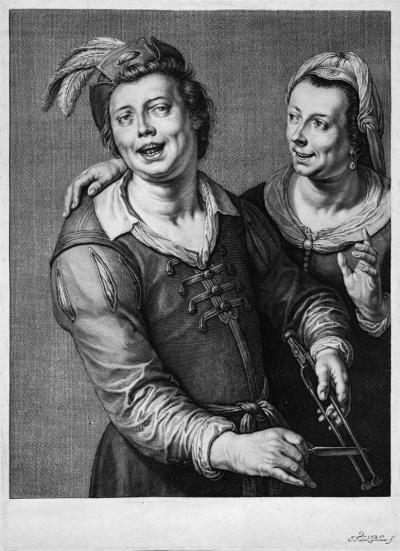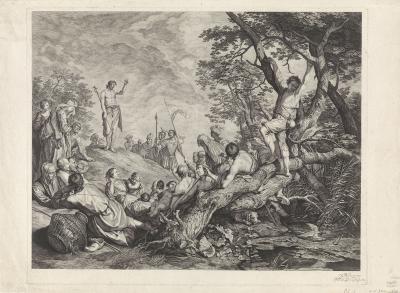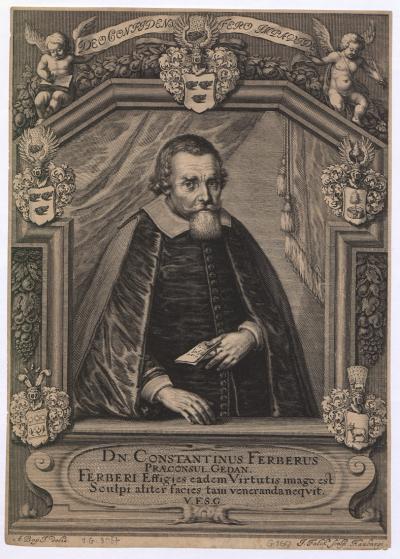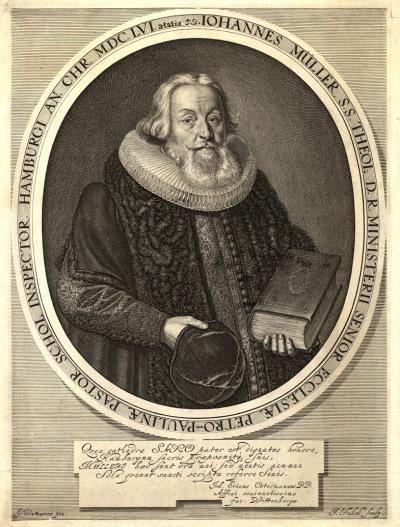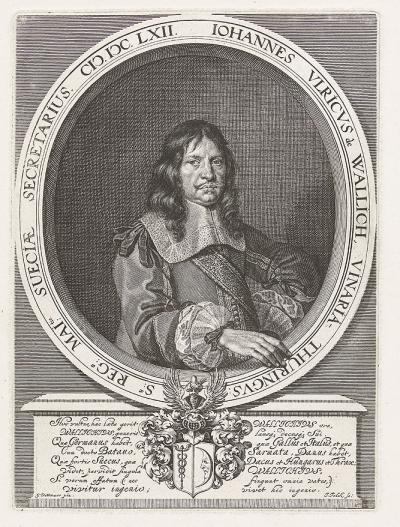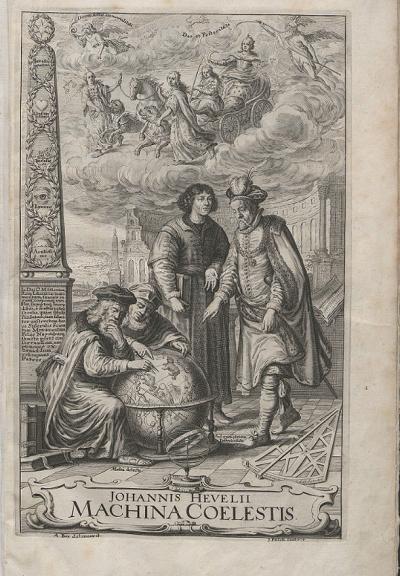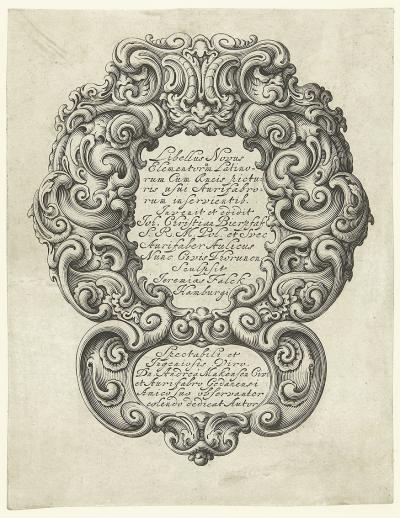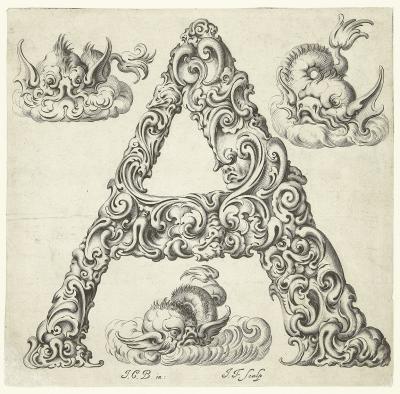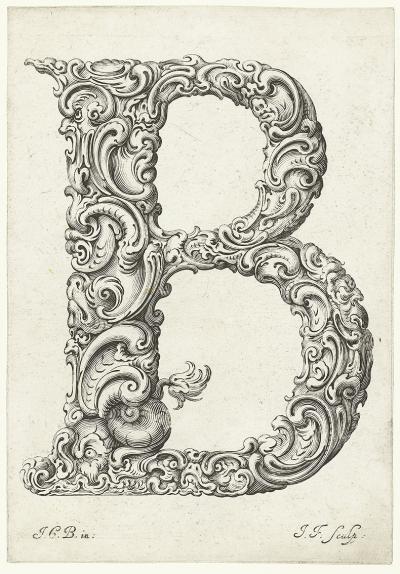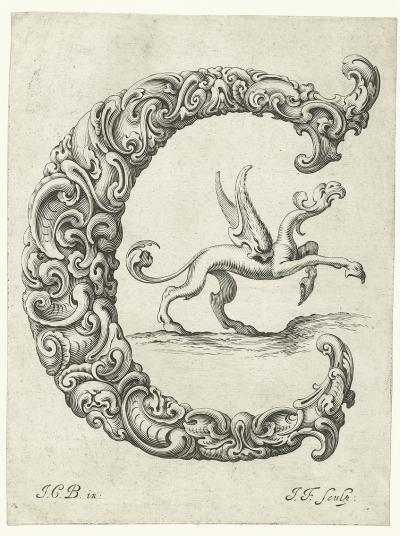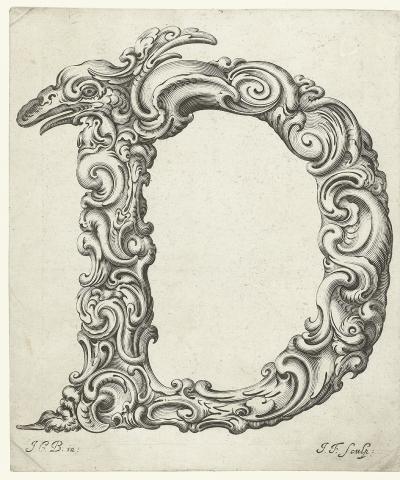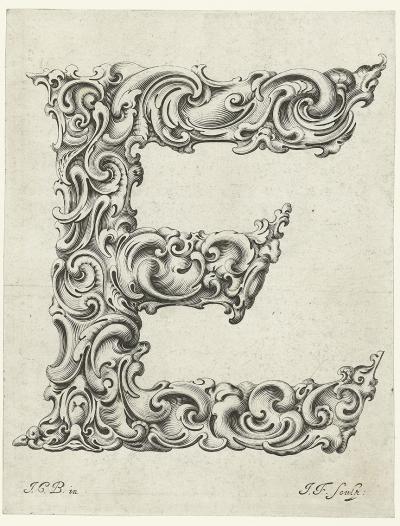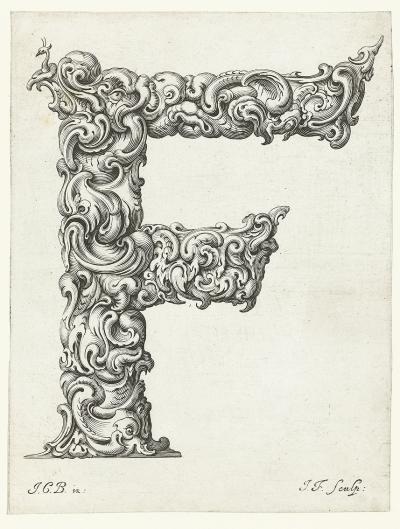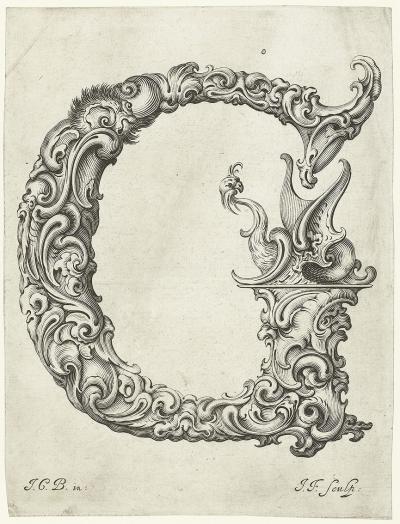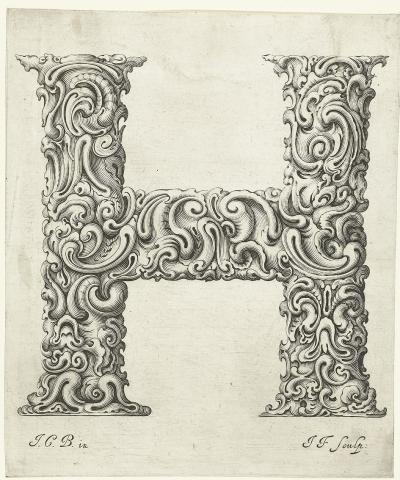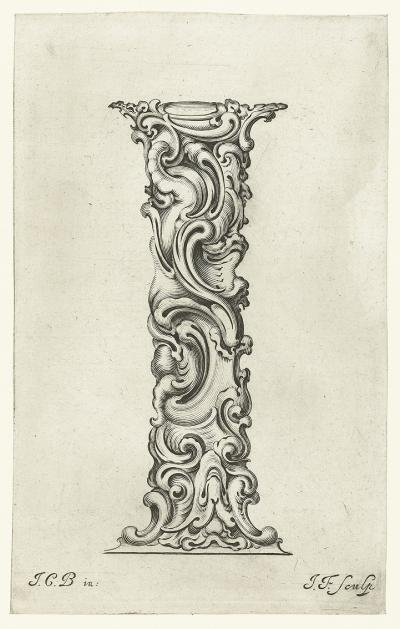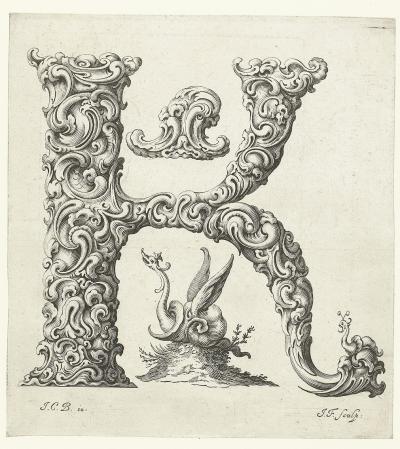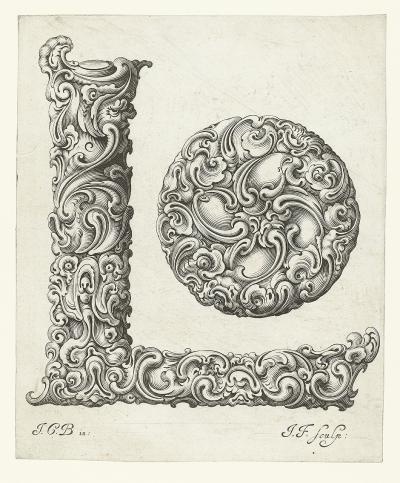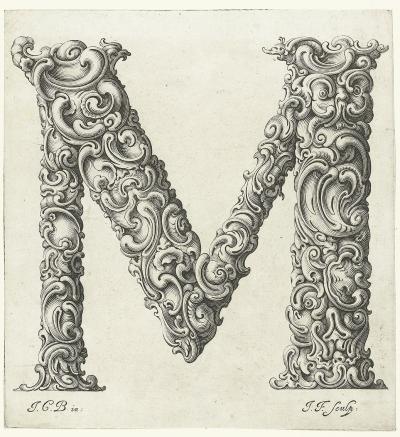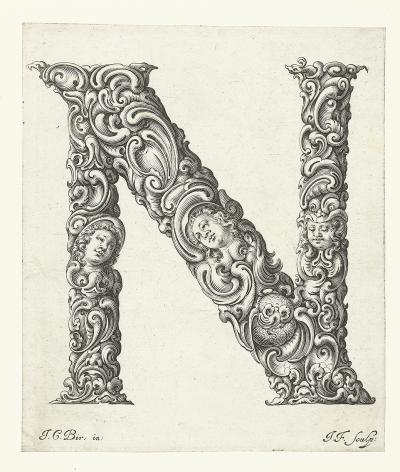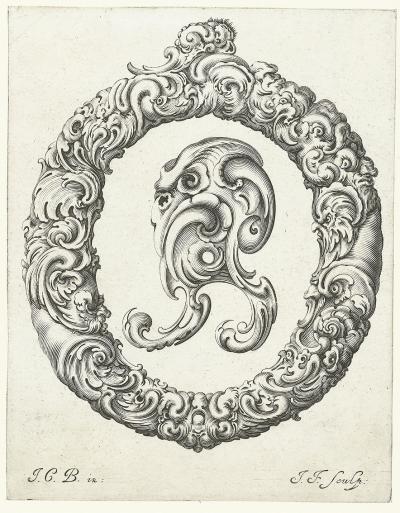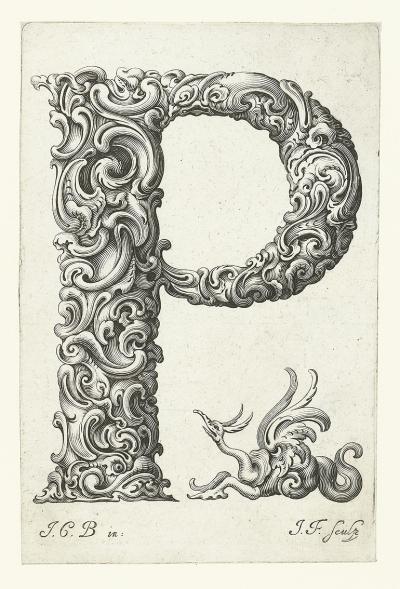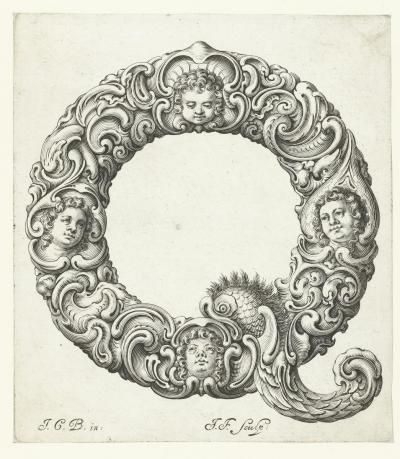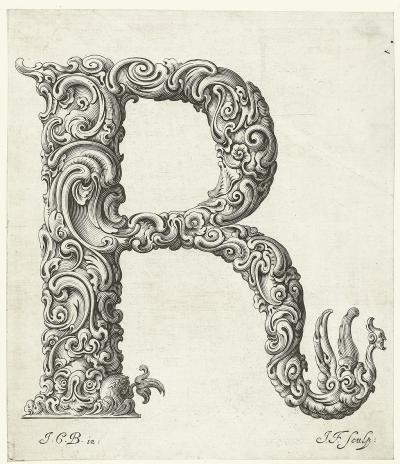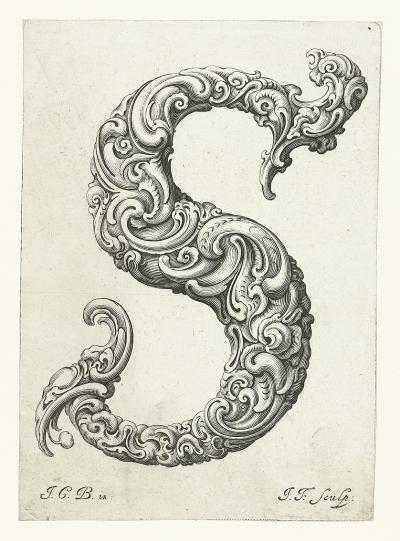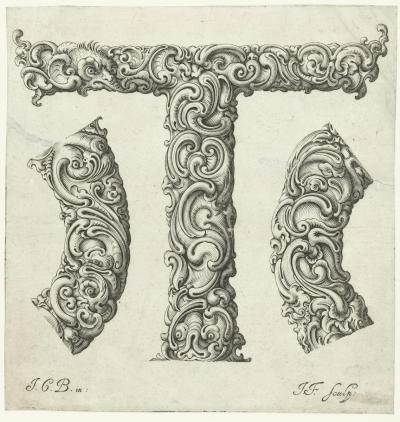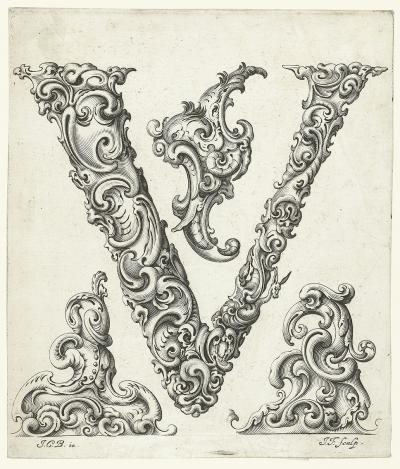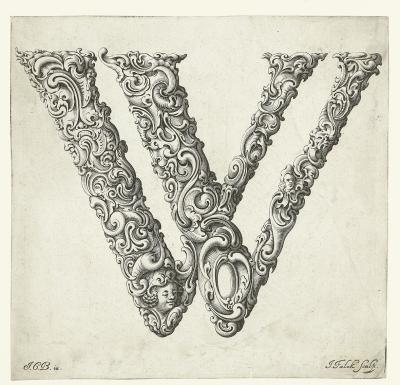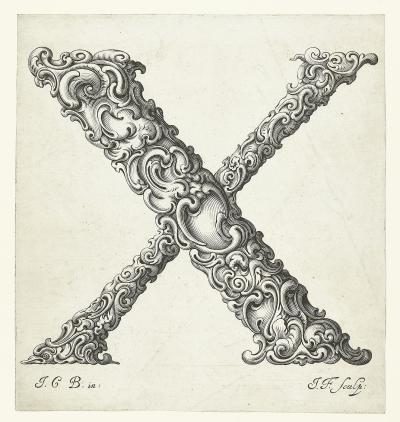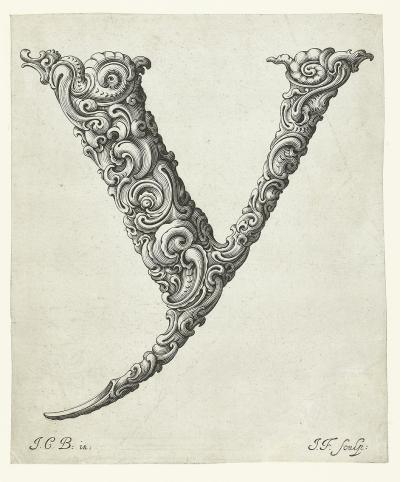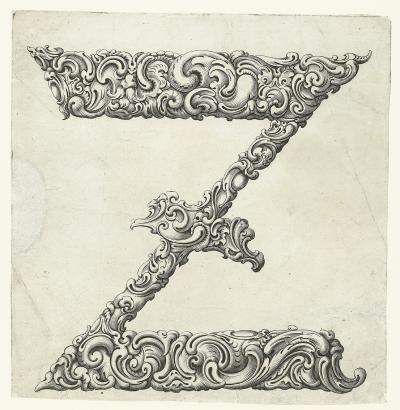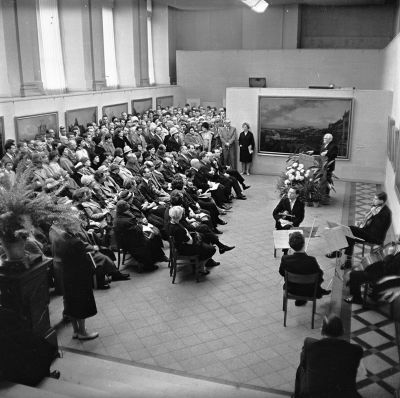Jeremias Falck
Mediathek Sorted

In 1655 Falck fled from Danzig with Hondius and Förster because they feared that the Second Nordic War between Sweden and Poland would spread as far as Danzig. After the abdication of Queen Christina in 1654, the Polish King Johann II Kasimir, great grandson of the Swedish King Gustav I (1496-1560) and last surviving Wasa, laid claim to the Swedish throne. Simultaneously the war between Sweden and Poland was all about which country was to dominate the two Baltic states. In July 1655 the Swedish Field Marshal, Arvid Wittenberg (Ill. 49) left Pommerania for Poland with an army of 14,000 men to counter the Polish forces of 13,000 men and 1,400 peasants in the Battle of Ujście. The Swedish King Karl X Gustav (Ill. 52) occupied Poland with an army of 15,000 men. Falck went to Copenhagen to apply for a post at the Danish Court. There he made a portrait of Friedrich III, King of Denmark and Norway (1609-1670), in a wreath of laurels with a suit of armour and ermine mantle. Duplicates appeared in Hamburg one year later. (Block 236, Ill. 68).
When Falck’s efforts to find a post in Copenhagen proved unsuccessful he travelled to Amsterdam, possibly on the advice of the Dutch artists and publishers he had met during his time in Paris. There he found work with the Amsterdam merchant and art collector, Gerrit Reynst (1599-1658), who had commissioned a group of engravers to engrave his complete art collection: these included Cornelis II van Dalen, Cornelis Visscher, Pieter Pietersz Holsteyn, Jan Lutma and Theodor Matham (Block, PDF, p. 10 also names Jacob Matham and Schelte Adamsz. à Bolswert). From 1625 onwards, along with his brother Jan (1601-1646) Gerrit Reynst collected them in Venice and after he died in Amsterdam they were made accessible to the general public. The collection of engravings was never completed after Reynst, who was the Lord Mayor of Amsterdam, drowned in the canal in front of his house in 1658. In December that year Falck, who was now in Hamburg wrote to Johannes Hevelius in Danzig that he had “wretchedly perished” (Block, PDF, p. 11). Thirty-four etchings based on paintings in the Reynst collection, of which 13 were by Falck, appeared in a work published by Cornelis Visscher in 1660. By this time Reynst’s widow had sold the art works to collectors all over Europe and to the Netherlands States General. The latter then made a gift of its 24 paintings, most from the time of the Italian Renaissance, to King Charles II of England (the so-called “Dutch Gift“), an act intended to improve the relations between the two countries. In 1657 Falck moved to Hamburg, as is demonstrated by a portrait dated in the same year of the Professor of Law in Rostock, Christian Woldenberg. Falck wrote to Hevelius that Reynst had paid him a fee of 2600 guilders for his work.
The engravings Falck made in Amsterdam between 1655 and 1657 are based on paintings from the “Cabinet Reynst”, some of which still exist in international collections. The painters to whom the original works are attributed by art historians sometimes differ greatly from the details given on Falck’s engravings. This is probably because the Reynst brothers were erroneously or consciously given false details by the sellers when they purchased the paintings in Venice. Hence the painting “Esau sells his birthright” that can be found in the Hermitage Museum in St Petersburg today, is now attributed to the Dutch artist, Matthias Stomer (ca. 1600 - after 1652), whereas Falck names the painter as the Venetian, Jacopo Tintoretto (Block 1, Ill. 69). The “Adoration of the Shepherds” by Lorenzo Lotto (1480-1557) is attributed by Falck to Paolo Veronese (Block 6, Ill. 70). A “Veneration of the Holy Family” by the shepherds, the young Tobias and other saints under the archangel Raphael has now been identified in Hampton Court Palace in London as a painting by Bonifazio Veronese (1487-1553), whereas Falck names the artist as Jacopo Palma il Vecchio (Block 10, Ill. 73). A “Carrying of the Cross” by Jacopo Bassano (ca. 1510-1592) can now be seen in the National Gallery in London; Falck, however names Paolo Veronese as the original artist (Block 18, Ill. 74). As with Falck, a “Portrait of Christ in the Temple” is still regarded as a painting by Andrea Schiavone (1510/1515-1563, Block 8, Ill. 71), the “Virgin Mary with the Christ child and St Anna” is listed as a picture by Andrea del Sarto (1486-1530, Block 9, Ill. 72). The “Ecstasy of St Paul” is clearly based on a painting by Johann Liss (ca. 1597-1631), the whereabouts of which are now unknown (Block 26, Ill. 75). The “Vision of St Peter” was clearly engraved from a painting by Domenico Fetti (1589-1624), that has now been lost (Block 29, Ill. 76). The “Old Woman at her Toilet Table” is based on a picture by Bernardo Strozzi (1581-1644, Block 156, Ill. 77), whereas Falck notes that both were painted by Johann Liss. The “Concert” is now regarded as the work of Giorgione (1478-1510) and not Guercino (Block 158, Ill. 78). The present whereabouts of two other paintings are now known: “The Prodigal Son with the Harlots” by Johann Liss (ca. 1597-1631) can be found in the Germanisches Nationalmuseum in Nuremberg (Block 160, Ill. 79); and a scene featuring “Queen Semiramis” by Guercino (1591-1666) is now in the Museum of Fine Arts in Boston (Block 155, Ill. 80).
All these works by Falck are contained in a book of etchings published by Cornelis Visscher, sometime after 1660, with the exception of a “Singing Couple” that was also in the “Cabinet Reynst”, and can be ascribed to several Dutch Masters, but probably not Cornelis van Haarlem, as noted by Falck (Block 157, Ill. 81). A duplicate of the engraving entitled “John the Baptist preaching a Sermon”, based on a painting by Abraham Blomaert (1564-1651) later appeared in Hamburg in 1661 (Block 14, Ill. 82). Block names four other paintings from the Reynst collection, from which Falck made engravings: a “Carrying of the Cross” by Paolo Veronese (Block 19), a “Crucifixion” by Antonis van Dyck (Falck’s large format engraving was once in the Poland Museum /Muzeum Polskie in Rapperswyl, Block 21).[5] Falck made an engraving of the “Entombment of Christ” from a painting by an unknown master; Block saw duplicates in the Czartoryski Museum and the Pawlikowski collection. Today there is a sheet in the Rijksmuseum in Amsterdam (Block 22, Ill. 28). Still in Paris, Falck completed a huge number of portraits of Saints (Block 27, 28, 30-33): and in an oval frame, an engraving of the “Four Evangelists” whilst they were writing, whose attributes are based on paintings by the Antwerp artist, Pieter van Mol (1599-1650), who set up a workshop in Paris in 1631 and became the court painter to Louis XIII in 1637 (Block 34-37, Ill. 29 a-d); a sequence of sheets featuring the “Twelve Prophets”, published by Le Blond (Block 38-49), and a portrait of St Mary Magdalene, Catherine of Alexandria, Genoveva of Paris and Klara of Assisi, all based on works by different painters and published by different publishers (Block 50-53).
[5] after the graphic works were moved to Poland and lost during the Second World War there are no longer any proof of any works by Jeremias Falck in the Poland Museum/Muzeum Polskie in Rapperswyl.

















































































